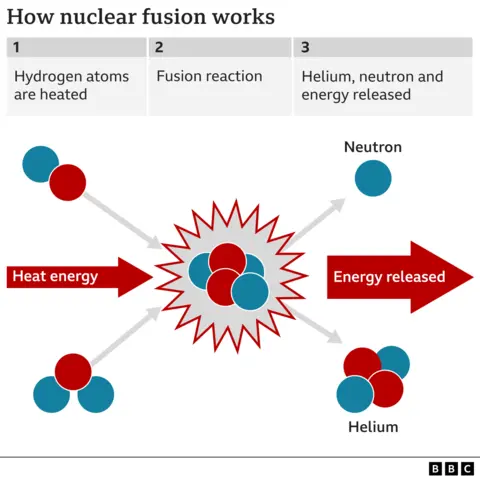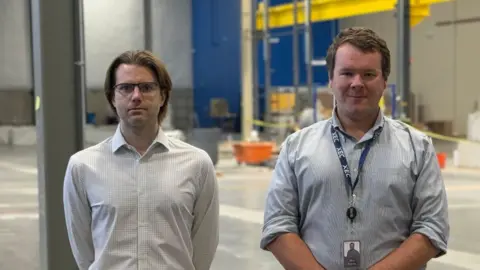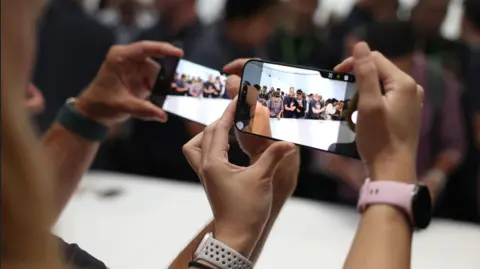Sci-Tech
Google, Meta Debunk Claims They Were Hiding Details About Trump Assassination Attempt

Trump supporters on X are absolutely convinced that Big Tech companies are censoring information about the attempted assassination of Donald Trump. Now both Google and Facebook have released lengthy explanations of what’s happening under the hood with their products in an attempt to show that recent glitches are not about political bias. And yet in the process, they’re inadvertently admitting how broken the internet is at the moment.
The New York Post ran a story on Monday trying to suggest that Meta is censoring information about the Trump assassination attempt that happened on July 13 at a rally in Butler, Pennsylvania. The Post asked MetaAI “Was the Trump assassination fictional?” and got a response that said it was. There are a few problems with the Post’s experiment, of course, with the primary issue being that Trump wasn’t actually assassinated, so the wording would be confusing for both computer and human alike. The “assassination” would have been fictional in the sense that Trump wasn’t killed. The assassination attempt was very real.
But putting aside the fact that it was a bad question, the AI still should have been able to parse things and not spit out bad information, like claiming that nobody even tried to kill Trump. Facebook has responded with a lengthy blog post that breaks down what went wrong.
“In both cases, our systems were working to protect the importance and gravity of this event,” Joel Kaplan, VP of Global Policy for Meta, wrote Tuesday. “And while neither was the result of bias, it was unfortunate and we understand why it could leave people with that impression. That is why we are constantly working to make our products better and will continue to quickly address any issues as they arise.”
Kaplan went on to say that the issue stems from AI chatbots “not always reliable when it comes to breaking news or returning information in real time.”
Honestly, he probably could’ve just stopped with his explanation right there. Generative AI just isn’t very good. It’s a technology with extreme limitations, including just making shit up and getting basic things wrong. It’s essentially fancy autocomplete and isn’t capable of serious reasoning or applying logic, despite the fact that it very much looks and sounds like it’s doing those things much of the time. But Kaplan can’t come out and say AI is a garbage product. Instead, he has to talk around this fact since Big Tech companies are investing billions in things that don’t work very well.
“In the simplest terms, the responses generated by large language models that power these chatbots are based on the data on which they were trained, which can at times understandably create some issues when AI is asked about rapidly developing real-time topics that occur after they were trained,” Kaplan wrote.
The post goes on to explain that breaking news situations can be particularly tricky for AI, especially when it’s a high profile even like an assassination attempt where the internet is getting flooded with conspiracy theories. He says that when serious news events happen in real time, the guardrails are put up in an effort not to spit out bad information.
“Rather than have Meta AI give incorrect information about the attempted assassination, we programmed it to simply not answer questions about it after it happened – and instead give a generic response about how it couldn’t provide any information,” Kaplan wrote.
This is a perfectly reasonable way to handle the situation. But it will never stop far-right social media users who are convinced everything they don’t like about an AI response is a product of political bias. Meta refers to the bad responses as “hallucinations,” which certainly sounds more sophisticated than “bullshit responses from a bad product.”
Kaplan also explained what happened when some users started to see a photo being flagged of the attempted assassination. As X users started to photoshop various photos from that day, one was made to look like the Secret Service agents surrounding Trump were smiling. Facebook flagged that image as doctored, giving users a warning, but it also caught up some real images of the shooting.
“Given the similarities between the doctored photo and the original image – which are only subtly (although importantly) different – our systems incorrectly applied that fact check to the real photo, too. Our teams worked to quickly correct this mistake,” Kaplan wrote.
Trump supporters on social media weren’t buying the explanation including Missouri’s Attorney General Andrew Bailey. He went on Fox Business Wednesday to suggest he might sue Meta over its supposed censorship.
“There’s a bias within the Big Tech oligarchy,” Bailey said. “They are protected by Section 230 of the Communications Decency Act, which they use as both a sword and a shield.”
Bailey went on to claim that Section 230 allowed tech companies to “censor speech” and charged they were “changing American culture in dangerous ways.”
Missouri AG Andrew Bailey suggests he is considering suing Meta and Google over accusations the companies “censored” the assassination attempt photo pic.twitter.com/5gLmJ5ttDp
— Aaron Rupar (@atrupar) July 31, 2024
Google also chimed in with a thread on X pushing back against claims being made that it was censoring Trump content.
“Over the past few days, some people on X have posted claims that Search is ‘censoring’ or ‘banning’ particular terms. That’s not happening, and we want to set the record straight,” Google’s Communications account tweeted on Tuesday.
“The posts relate to our Autocomplete feature, which predicts queries to save you time. Autocomplete is just a tool to help you complete a search quickly. Regardless of what predictions it shows at any given moment, you can always search for whatever you want and get easy access to results, images and more.”
Google explained that people were noticing that searches about the assassination attempt weren’t seeing the kinds of autocomplete answers that gave a full picture of what happened. The explanation, according to Google, is that Search is built with guardrails, specifically related to political violence, and now calls those systems “out of date.”
Google also noted that searches for “President Donald” weren’t providing the kinds of autocomplete suggestions one would expect. Obviously, anyone would expect to see those two words completed with “Trump,” which wasn’t happening in recent days. But that was another case of the product just not working very well, as Google explained it was also not completing “Obama” when people started typing “President Barack.”
Other people were really upset to see photos of Kamala Harris when searching for news about Trump, but the simple explanation is that Harris is surging in the polls and more likely to have photos at the top of news articles given her popularity right now. Trump is, after all, running against Harris and losing quite badly, if the latest polling is to be believed.
(4/5) Some people also posted that searches for “Donald Trump” returned news stories related to “Kamala Harris.” These labels are automatically generated based on related news topics, and they change over time. They span the political spectrum as well: For example, a search for… pic.twitter.com/55u1b5ySCr
— Google Communications (@Google_Comms) July 30, 2024
“Overall, these types of prediction and labeling systems are algorithmic. While our systems work very well most of the time, you can find predictions that may be unexpected or imperfect, and bugs will occur,” Google wrote. “Many platforms, including the one we’re posting on now, will show strange or incomplete predictions at various times. For our part, when issues come up, we will make improvements so you can find what you’re looking for, quickly and easily. We appreciate the feedback.”
None of these explanations will calm the right-wingers who believe everything happening in Big Tech is a conspiracy against their dipshit candidate Donald Trump. But these responses from Facebook and Google help give some clarity on what’s happening behind the scenes at these enormous companies. Their products don’t always work as intended, and charges of political bias are typically wrong in many, many ways.
Sci-Tech
Sony reveals much more expensive and powerful PlayStation 5 Pro

After years of rumour, speculation and hype, Sony has confirmed it is launching a more powerful – and much more expensive – version of its hugely popular PlayStation 5 console.
The PS5 Pro will be able to show more advanced graphics and display the most demanding games at higher, more consistent frame rates.
But that added power will come at a cost: the PS5 Pro will be the most expensive console from Sony to date.
It will cost £699.99 when it launches on 7 November this year – hundreds of pounds more than the PS5.
“The price point of the PS5 Pro will inevitably cause a lot of commentary,” analyst Piers Harding-Rolls from research firm Ampere said.
He said the firm appeared to be betting that the console’s improved performance would encourage users to upgrade their existing hardware and spend more on software.
Mark Cerny, lead architect of the PS5, said it was “the most powerful console we’ve ever built”.
He said it sought to resolve a problem gamers had faced for years – whether to play a console game in so-called “fidelity mode”, which favours visuals, or “performance mode”, which makes a game smoother, though at the cost to how it looks.
He said the PS5 Pro was about “removing that decision, or at least narrowing that divide”.
GamesIndustry.biz head Christopher Dring told the BBC it was “a very targeted console” for PlayStation’s “most enthusiastic audience”.
“The console industry has had a tough time this year, with falling sales of PS5, Xbox Series S and X, and the ageing Nintendo Switch,” he said.
“PS5 Pro isn’t going to change that situation.”
But he said Sony might have one eye on the most anticipated game in the world – Grand Theft Auto VI – which is due to release next year.
“When GTA 6 does launch, PlayStation will be able to say to players that the game will look best on PS5 Pro,” he said.
Companies have released updated versions of their own consoles with minor revisions for decades, but this release indicates the comparatively new trend of “pro” hardware is here to stay.
Generally, this means hardware changes to current-generation consoles that lets games look better – but critically these tweaked consoles don’t have exclusive games.
In other words, games will still be released for PS5, and gamers can choose whether to play them on a regular console or a pro model with differences in graphics and performance.
Paul Tamburro, from news website PlayStation LifeStyle, said fans had been hoping the console could “bridge the gap” between performance and fidelity modes, and the upgrade would help.
“However, it also feels that the console doesn’t do enough to justify that steep price point,” he said.
“It launching without a disc drive and still only targeting 60 FPS is disappointing.
“This isn’t an easy sell to current PS5 owners.”
It’s Sony’s second major foray into this space after 2016’s PS4 Pro, which brought 4k graphics to the original PlayStation 4.
And it comes three years after Nintendo released its own take on a pro model – a Nintendo Switch with a larger, better screen.
Today’s announcement from Sony is not as significant as the PS4’s jump to 4k graphics, but it still represents a step forward in home consoles.
It comes at a time when PCs have been getting increasingly powerful, with the release of Nvidia’s Geforce 40 series of graphics cards in 2022, which have put PCs firmly ahead of home consoles in the race for the best visuals.
But it’s worth remembering just one of these graphics cards can cost as much as a whole PS5, so consoles tend to strike a balance between the best visuals and the best price.
Like with the last console generation, this release means Sony will now have multiple versions of its PS5 available to consumers, with different price points and specs.
Rumours spread widely ahead of the announcement, with fans speculating on the features an upgraded console might have.
Chief among them were unsourced claims that the PS5 Pro would be backwards compatible with games from previous Sony consoles – with some reports suggesting this would go as far back as the original PlayStation.
There was nothing in the announcement to confirm the rumours.
Sci-Tech
Could powerful lasers power a working reactor?

 Damien Jemison
Damien JemisonDeep under the Nevada desert in the 1980s the US conducted secret nuclear weapons research.
Among the experiments was an effort to see if nuclear fusion, the reaction which powers the sun, could be sparked on earth in a controlled setting.
The experiments were classified, but it was widely known among physicists that the results had been promising.
That knowledge caught the attention of two young graduate students working at the Los Alamos National Laboratory in the late 2000s, Conner Galloway and Alexander Valys.
The Los Alamos lab was originally set up in 1943 as a top-secret site to develop the first nuclear weapons. Located near Santa Fe, New Mexico it is now a US government research and development facility.
“When Alex and I learned about those tests at Los Alamos, our reaction was like ‘wow, inertial fusion has already worked!’. Laboratory-scale pellets were ignited, the details were classified, but enough was made public that we knew that ignition was achieved,” says Mr Galloway.
Nuclear fusion is the process of fusing hydrogen nuclei together, which produces immense amounts of energy. The reaction creates helium and not the long-lived radioactive waste of the fission process which is used in existing nuclear power stations.
If fusion can be harnessed, then it promises abundant electricity, generated without producing CO2.
Those tests in the 1980s led to the US government building the National Ignition Facility (NIF) in California, a project to see if nuclear fuel pellets could be ignited using a powerful laser.
After more than a decade of work, in late 2022 researchers at NIF made a breakthrough. Scientists conducted the first controlled fusion experiment to produce more energy from the reaction than that supplied by the lasers which sparked it.

While physicists around the world marvelled at that breakthrough, it had taken the scientists at NIF much longer than expected.
“They were energy starved,” says Mr Galloway.
He doesn’t mean they needed more snacks, instead the NIF laser was only just powerful enough to ignite the fuel pellet.
Mr Galloway and Mr Valys think that more powerful lasers will make it possible to build a working fusion reaction that can supply electricity to the power grid. To do that they founded Xcimer, based in Denver.
NIF had to make do with a laser that could pump out two megajoules of energy. Mr Galloway and Mr Valys are planning to experiment with lasers that can supply up to 20 megajoules of energy.
“We think 10 to 12 [megajoules] is the sweet spot for a commercial power plant,” says Mr Galloway.
Such a laser beam would hit the fuel capsule with a powerful punch. It would be like taking the energy of a 40-tonne articulated lorry travelling at 60mph and focussing it on the centimetre-sized capsule for a few billionths of a second.
More powerful lasers will allow Xcimer to use larger and simpler fuel capsules than NIF, which found it difficult to perfect them.
 Xcimer
XcimerXcimer joins dozens of other organisations around the world trying to build a working fusion reactor.
There are two main approaches. Smashing a fuel pellet with lasers falls under the category of inertial confinement fusion.
The other way, known as magnetic confinement fusion, uses powerful magnets to trap a burning cloud of atoms called plasma.
Both approaches have daunting engineering challenges to overcome.
In particular, how do you extract the heat generated during fusion so you can do something useful with it, like drive a turbine to make electricity?
“I suppose my scepticism is, I haven’t yet even seen a persuasive conceptual diagram of how you manage the process of taking energy out while keeping the fusion reaction going,” says Prof Ian Lowe at Griffith University in Australia.
He has spent his long career working in energy research and policy. While Prof Lowe supports the development of fusion technology, he just argues that a working fusion reactor won’t come fast enough to help bring down CO2 emissions and tackle climate change.
“My concern is that even the most optimistic view is that we’d be lucky to have commercial fusion reactors by 2050. And long before then we need to have decarbonized the energy supply if we’re not going to melt the planet,” he says.
Another challenge is that the fusion reaction produces high energy particles that will degrade steel, or any other material that lines the reactor core.
 Getty Images
Getty ImagesThose in the fusion industry don’t deny the engineering challenges, but feel they can be overcome.
Xcimer plans to use a “waterfall” of molten salt flowing around the fusion reaction to absorb the heat.
The founders are confident that they can fire the lasers and replace the fuel capsules (one every two seconds) while keeping that flow going.
The flow of molten salt will also be thick enough to absorb high energy particles that could potentially damage the reactor.
“We just have two relatively small laser beams coming in from either side [of the fuel pellet]. So you only need a gap in the flow big enough for those beams, and so you don’t have to turn off and turn on the entire flow,” says Mr Valys.
But how quickly can them make such a system work?
Xcimer plans to experiment with the lasers for two years, before building a target chamber, where they can target the fuel pellets.
The final stage would be the working reactor, which they hope would be plugged into the electricity grid in the mid-2030s.
To fund the first phase of their work, Xcimer has raised $100m (£77m) . The money will be used to build a facility in Denver and the prototype laser system.
Hundreds of millions dollars more will be needed to build a working reactor.
But for the founders of Xcimer, and other fusion start-ups, the prospect of cheap, carbon-free electricity is irresistible.
“You know, it’ll change the trajectory of what’s possible for humanity’s progress,” says Mr Valys.
Sci-Tech
Apple banks on AI to boost sales of its new iPhone

 Getty Images
Getty ImagesWith business slumping, Apple has been under pressure to show what it will offer buyers to jumpstart a new wave of iPhone sales.
On Monday, the technology giant revealed its hand – the iPhone 16 which has a camera button on the outside of the handset.
The button is an external clue to the changes Apple said it had made inside its latest smartphone, aimed at harnessing the latest in artificial intelligence (AI).
Apple’s chief executive Tim Cook said the upgrades would “push the boundaries of what a smartphone can do” but the firm has tough competition, as other brands have already integrated generative AI features into their handsets.
Apple’s share price fell during its “Glowtime” event, where it unveiled the iPhone 16 as well as other products, and ended the day flat. The company, worth $3 trillion, is facing concern that it is losing its edge in the burgeoning area of artificial intelligence.
Sales of the iPhone – Apple’s most important product which accounts for around half of its total sales – have stalled in recent months. They slipped by 1% over the nine months ended 29 June compared with a year earlier.
Apple said its new phones, which come with longer lasting batteries, more powerful chips and enhanced privacy features, were its first built specifically to handle AI and its new “Apple Intelligence” tools, many of which were announced in June.
Those include new tools for writing and creating new emojis as well incorporating OpenAI’s chatbot ChatGPT into Siri to help users with some queries and text generation requests.
On Monday, Apple also announced updates to its Apple Watch and its AirPod headphones, which will allow them to automatically drop the volume when users start in-person conversations and to decline calls with the shake of a head.
It said the Pro version of its AirPods would be able to be used as a “clinical grade” personal hearing aid for people with mild or moderate hearing loss.
The company said it was expecting marketing approval from regulators for the device “soon” and the feature would be available this autumn in more than 100 countries, including the US, Germany and Japan.
Previously, the company had a feature that allowed people to pair hearing aids with iPhones and other devices.
The products were rolled out at a glossy event where protestors gathered in a designated free speech area across the street, urging executives to ramp up efforts to protect children from dangerous content in the company’s App Store.
The protest featured a life-sized blow-up made to resemble Mr Cook.
Sales of the new range start in September, with prices for the iPhone16 starting at $799.
But the Apple Intelligence features are not set to be available on operating systems until October, starting in the US and heading to other countries in the following months. They will be available in the UK in December.
Ben Wood, chief analyst at the market research firm CCS Insight, said it was likely that many people would dismiss the company’s new camera control as a “glorified shutter button”.
But he said it offered “very significant” upgrades, including visual, AI-powered search and he came away from the presentation persuaded that Apple would win over customers.
“The combination of Apple Intelligence and new camera features on the iPhone 16 will help spur upgrades from loyal Apple customers,” he said. “Particularly as Apple is positioning this latest update as being a future-proof purchase for customers wanting to get Apple Intelligence features as they roll out over the next few years.”
 EPA
EPAApple has been slower than rivals Samsung and Google to bake generative AI features for photo editing, translation and web browsing into its devices.
Competitors are now building them into folding, flipping and even tri-folding smartphones.
Pre-orders for Huawei’s new tri-fold phone, the Mate XT, reportedly hit more than three million on Monday.
Gartner analyst Annette Zimmermann said because Apple was rolling out AI-ready smartphones later than rivals, it was “critical” they deliver.
She warned that rolling the features out before they were ready could risk their reputation or prompt sales losses.
-

 African History5 years ago
African History5 years agoA Closer Look: Afro-Mexicans 🇲🇽
-

 African History8 months ago
African History8 months agoBlack History Facts I had to Learn on My Own pt.6 📜
-

 African History5 years ago
African History5 years agoA Closer Look: Afro-Mexicans 🇲🇽
-

 African History1 year ago
African History1 year agoMajor African Tribes taken away during the Atlantic Slave Trade🌍 #slavetrade #africanamericanhistory
-

 African History1 year ago
African History1 year agoCameroon 🇨🇲 World Cup History (1962-2022) #football #realmadrid #shorts
-

 African History1 year ago
African History1 year agoWhat did Columbus Find in 1493? 🤯🔥🔥 #history #civilization #mesoamerica #africa #kemet
-

 African History7 months ago
African History7 months agoBlack History Inventors: Mary Kenner 🩸
-

 African History1 year ago
African History1 year agoOrigin Of ‘Cameroon’ 🇨🇲😳#africa





































